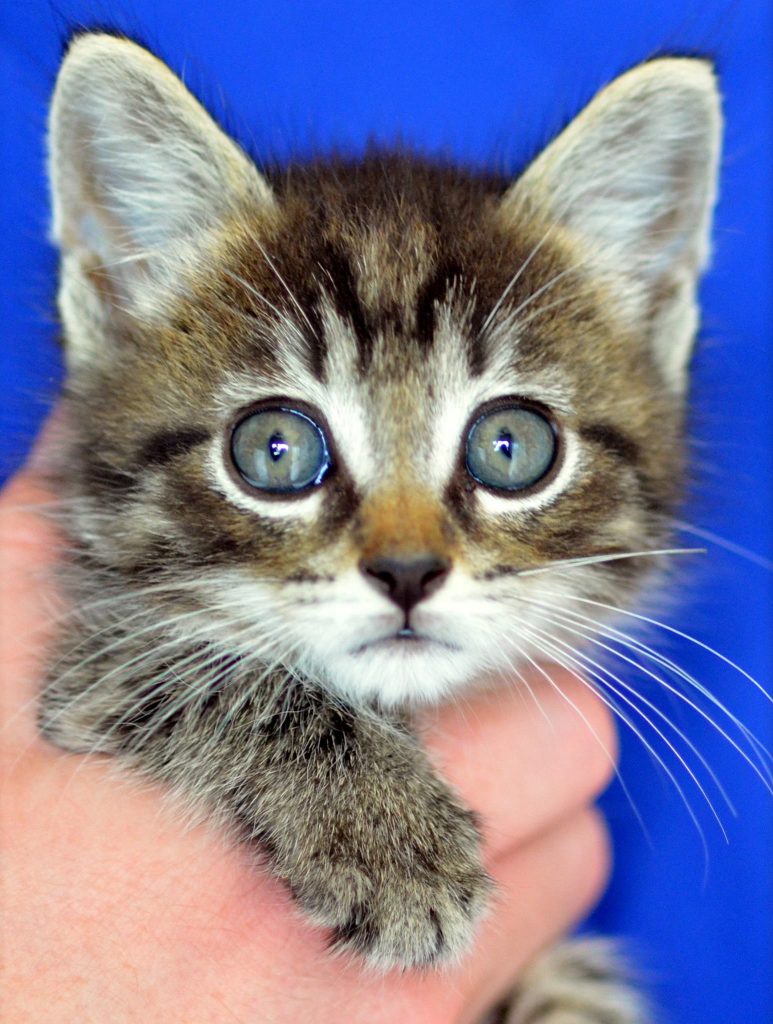On January 10, 2017 Clay Mills Veterinary Clinic in Lexington, Kentucky took a huge step for catkind and stopped declawing cats. [button href=”https://www.facebook.com/Clays-Mill-Veterinary-Clinic-262021432868/?hc_ref=PAGES_TIMELINE&fref=nf” color=”green” newwindow=”yes”] Facebook page of Clay Mills Veterinary Clinic[/button] PLEASE GIVE THEM A BIG THANK YOU ON THEIR FACEBOOK PAGE FOR THIS!
Please send this post to your vet if they still declaw cats. Post this on the facebook page of your vet and hopefully it will inspire them to take the same path. Clay Mills Veterinary Clinic received thousands of notes from people thanking them for doing the right thing. I’m sure it also brought them more business since pet owners are looking for ethical veterinary practices that don’t do this inhumane procedure to cats.
Declawing is inhumane. Declawing doesn’t keep a cat in a home or out of a shelter. (There are thousands of declawed cats in shelters who are being euthanized because of their behavioral issues from their declaws. Every single day cat owners are trying to give up their declawed cats.)
Declawing is wrong and there are many humane alternatives. If your vet won’t stop then it shows they don’t want to lose the income from declawing and they don’t want to take the time to counsel cat owners about the humane alternatives and don’t want to take the time to educate cat owners on why declawing is harmful and mutilating to a cat.
 Clay Mills Veterinary Clinic
Clay Mills Veterinary Clinic
“After careful consideration and much soul-searching, we have decided to stop declawing cats.
We know this is a controversial topic. As veterinarians, we have been trained to do this procedure, we have done it for years very well, and with much pain medicine. We have all owned declawed cats ourselves. This is not a condemnation of people with declawed cats; we’ve had them, too.
We used to believe that declawing cats saved their lives. We feared that cats with claws would be turned in to the shelters in record numbers, and that we were doing a good thing by making cats more likely to stay in their homes.
As it turns out, the numbers do not bear this out. When areas have stopped declawing, the number of surrendered cats actually dropped. This left us with a question. We know that even under the best of circumstances, a declaw is a major and painful surgery, (and no less so when it is performed with a laser, by the way.) It is an amputation of the end of the cat’s “finger,” not just the removal of the claw itself. And even when performed perfectly, can have life-long complications.
So we wondered, if we weren’t saving cats, and this procedure can be painful to cats, why were we doing this? Although we know furniture destruction can be a problem, it can almost always be prevented with the right techniques. Besides, when it comes down to it, as veterinarians, our main concern is the cats, not the couches. We have to do what is best for our patients. Thank you for your understanding.
Please see the tips for how to keep your cat from scratching your furniture. They really work!
1. If your cat is already scratching, go ahead and stop the damage by covering that area. If it is a couch, for example, hand a sheet over the couch arm (they won’t like the way the sheet “gives” when they lean on it), or cover with aluminum foil, double sides tape or “sticky paws” (available on Amazon and made for this purpose.)
2. Provide appropriate, alternate scratching surfaces. If you cat is already scratching, put the posts in these same areas. (In front of the arm of the couch he is scratching, for example.) Cats like to scratch prominent areas of rooms as a visual marker. Scratching posts by sleeping areas are also helpful.
3. Cats want to be able to put their full weight against posts without the post “giving.” Posts need to be heavy and wide so they won’t tip, and tall so cats can stretch way up to scratch. Cat trees are an excellent way to get a tall, sturdy scratching surface.
4. Cats also like to have some horizontal scratching surfaces.
5. All scratching surfaces should be made of sisal or similar material that cats can somewhat “tear up.” They use scratching as a visual marker, so they like for their scratched material to show that it has been scratched.
6. Use Feliway. Cats also scratch as scent marking. Scent glands between their toes leave pheromones on scratched areas. Feliway make the cats think the area has already been marked, so they feel less like they need to scratch it again. Spray Feliway on the furniture on the areas being scratched.
7. Consider keeping your cat out of the room with the good furniture when you’re not at home until he gets used to the scratching rules.
8. Trim your cat’s nails. We can show you how at the clinic and then it’s easy to do yourself at home.
9. “Soft Paws” are little rubber coverings for the cats claws you can use if nothing else is working.
To anyone reading these tips: Remember, all the deterrent methods in the world won’t work if your cat has doesn’t have a good alternative. The mistake most people with cats (and most people making scratching posts) make is to use a post that is too short and too easily tipped over. A cat scratching a vertical surface wants to stretch all the way up as high as he can to scratch (and that’s pretty high!) What do they do this on in nature? Trees! ![]() 🙂 Since we don’t have trees in the house we need really tall, really sturdy scratching surfaces. As well as horizontal surfaces.
🙂 Since we don’t have trees in the house we need really tall, really sturdy scratching surfaces. As well as horizontal surfaces.
It helps to think of a cat more like a dog in this way. Look what we go through to keep our puppies and dogs from chewing up our stuff and urinating in the house. It’s a lot of work! We have been used to thinking of cats as automatic, but they need some training, too.
A lot of people from Europe and Australia are chiming in that declaws have been banned there forever. That’s true. They are way ahead of us in the US. (They’re getting way ahead in healthy breed standards, too, but that is a post for another day!) Studying the situation in Europe and Australia has been crucial in getting people in the US to understand that their cats can keep their claws and everything will be fine, and for helping veterinarians understand that not declawing would not lead to an increase in cats given up to shelters, so let’s thank our friends across the pond for that. ![]() ”
”
